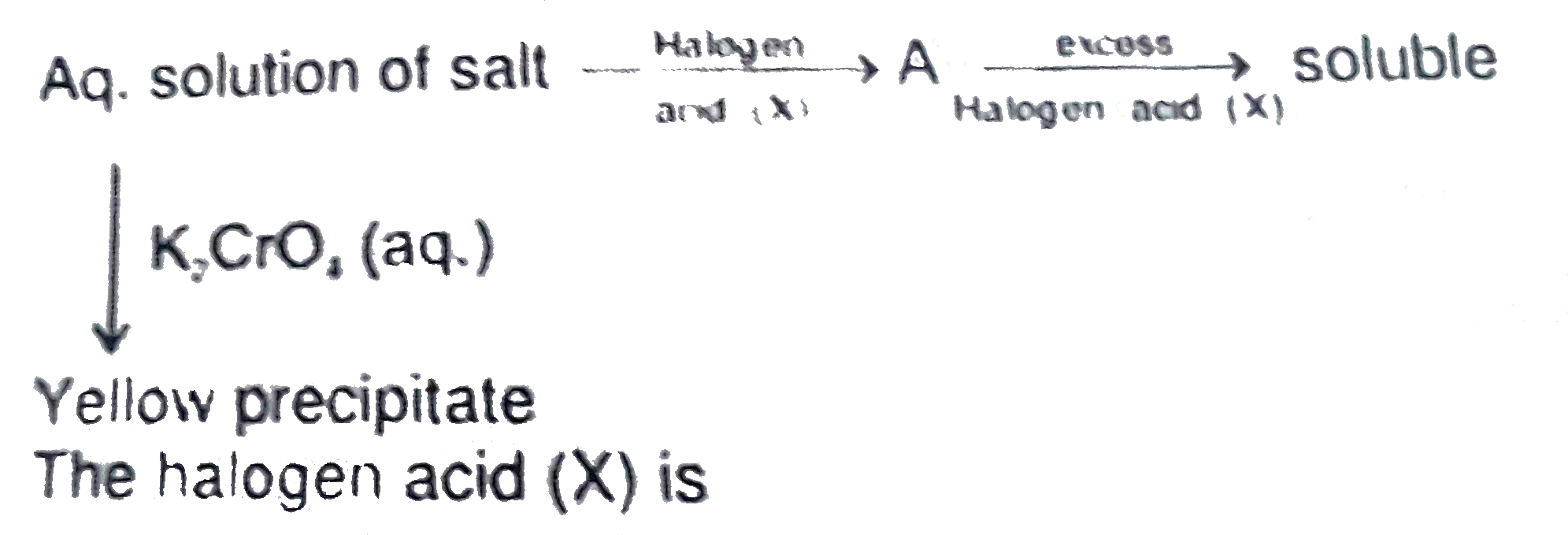the number of halogen/ (s) forming halic (v) acid is_____________
To solve the question regarding the number of halogens that can form the XO3⁻ ion (where X represents a halogen), we will analyze the electronic configuration of the halogens and their ability to expand their octet.
1. Identify the Halogens: The halogens in the periodic table are Fluorine (F), Chlorine (Cl), Bromine (Br), and Iodine (I).
2. Electronic Configuration: The outer electronic configuration of halogens is ns² np⁵. This means:
- Fluorine: 1s² 2s² 2p⁵
- Chlorine: 1s² 2s² 2p⁶ 3s² 3p⁵
- Bromine: 1s² 2s² 2p⁶ 3s² 3p⁶ 4s² 4p⁵
- Iodine: 1s² 2s² 2p⁶ 3s² 3p⁶ 4s² 4p⁶ 5s² 5p⁵
3. Octet Expansion: To form the XO3⁻ ion, the halogen must be able to expand its octet. This is possible if the halogen has vacant d-orbitals that can accommodate additional electrons.
- Fluorine: Does not have vacant d-orbitals (it has only 2 energy levels), hence it cannot expand its octet.
- Chlorine: Has vacant 3d orbitals, so it can expand its octet.
- Bromine: Has vacant 4d orbitals, allowing it to expand its octet.
- Iodine: Has vacant 5d orbitals, enabling it to expand its octet.
4. Conclusion: Only Chlorine, Bromine, and Iodine can form the XO3⁻ ion because they have the ability to expand their octet. Fluorine cannot form this ion due to its inability to accommodate additional electrons.
5. Final Answer: Therefore, the number of halogens that can form the XO3⁻ ion is 3 (Chlorine, Bromine, and Iodine).
- Fluorine: 1s² 2s² 2p⁵
- Chlorine: 1s² 2s² 2p⁶ 3s² 3p⁵
- Bromine: 1s² 2s² 2p⁶ 3s² 3p⁶ 4s² 4p⁵
- Iodine: 1s² 2s² 2p⁶ 3s² 3p⁶ 4s² 4p⁶ 5s² 5p⁵
- Fluorine: Does not have vacant d-orbitals (it has only 2 energy levels), hence it cannot expand its octet.
- Chlorine: Has vacant 3d orbitals, so it can expand its octet.
- Bromine: Has vacant 4d orbitals, allowing it to expand its octet.
- Iodine: Has vacant 5d orbitals, enabling it to expand its octet.
Topper's Solved these Questions
Similar Questions
Knowledge Check

The halogen acid (X) isAHFBHClCHIDCl2 (aq.)Decreasing order of halogen to form oxide is
AF>Cl>Br>IBI>Br>Cl>FCBr>Cl>I>FDI>Cl>Br>FAs the atomic number of halogens increases. The halogens
ALose the outermost electrons less readilyBBecome lighter in colourCBecome less denserDGain electrons less readily
In the first order decomposition of oxalic acid following data were obtained.

The half-life period of the reaction is_____________ min.
View SolutionH−X (X = halogen) bond is formed due to ________.
View SolutionWhich one of the following halogens forms only one acid?
View SolutionWhich one of the halogen acid is a liquid?
View SolutionThe oxyacid of halogen has maximum acidic nature
View Solution
